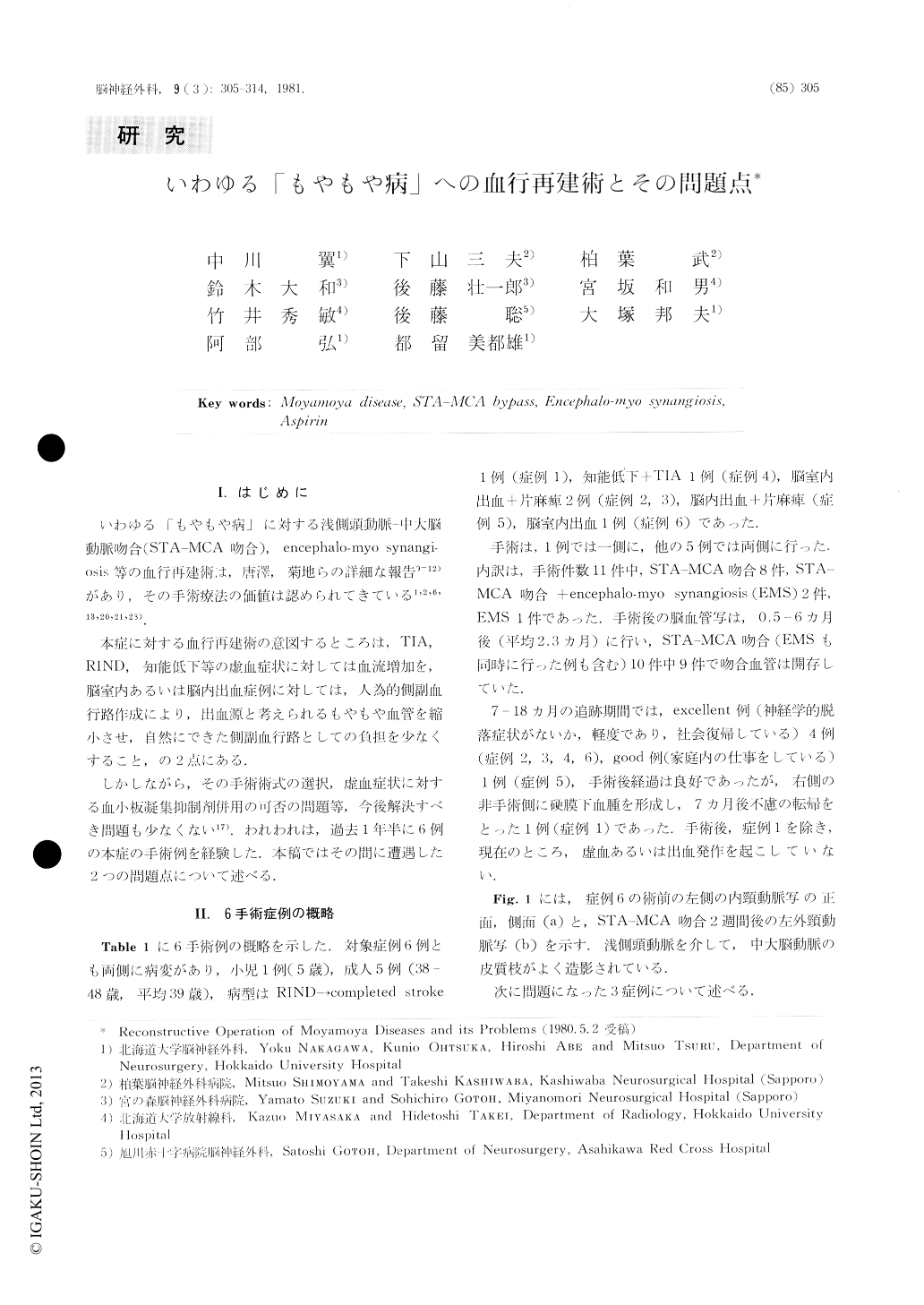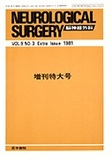Japanese
English
- 有料閲覧
- Abstract 文献概要
- 1ページ目 Look Inside
I.はじめに
いわゆる「もやもや病」に対する浅側頭動脈—中大脳動脈吻合(STA-MCA吻合),encephalo-myo synangiosis等の血行再建術は,唐澤,菊地らの詳細な報告9-12)があり,その手術療法の価値は認められてきている1,2,6,13,20,21,23).
本症に対する血行再建術の意図するところは,TIA, RIND,知能低下等の虚血症状に対しては血流増加を,脳室内あるいは脳内出血症例に対しては,人為的側副血行路作成により,出血源と考えられるもやもや血管を縮小させ,自然にできた側副血行路としての負担を少なくすること,の2点にある.
しかしながら,その手術術式の選択,虚血症状に対する血小板凝集抑制剤併用の可否の問題等,今後解決すべき問題も少なくない17).われわれは,過去1年半に6例の本症の手術例を経験した.本稿ではその間に遭遇した2つの問題点について述べる.
Cerebrovascular moyamoya disease is a chronic occlusive disease of unknown etiology, 90% of which are found among Japanese. At the 3rd International Symposium on Microsurgical Anastomosis held in 1976, Kikuchi and Karasawa reported an preventing effect of STA-MCA bypass surgery for ischemic episode of this disease. Thereafter, they proposed a new operation to place temporal muscle on the brain surface, namely Encephalo-Myo Synangiosis (EMS), for the patients lacking suitable recipient artery of middle cerebral artery territory.

Copyright © 1981, Igaku-Shoin Ltd. All rights reserved.


